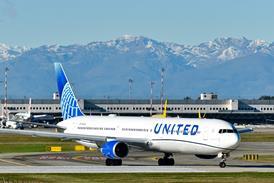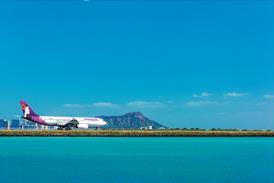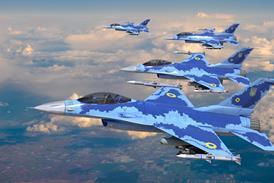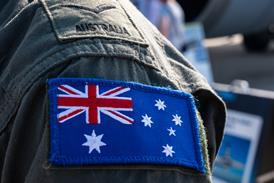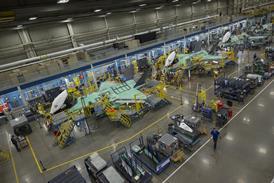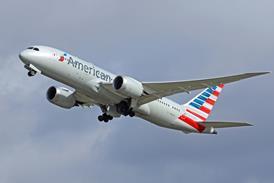Ramon Lopez/BALTIMORE
NORTHROP Grumman's $3 billion acquisition of Westinghouse's defence-electronics business unit earlier this year has given the US aerospace firm "the fourth leg of the stool" upon which Northrop Grumman intends to evolve into a premier defence and civil-electronics manufacturer and systems integrator.
Dr James Roche, installed as a corporate vice-president and general manager of the Baltimore-based Electronic Sensors and Systems division (ESSD) six months ago, says that the second "leg" was created when aircraft manufacturer Northrop Grumman was formed with Northrop's purchase of systems integrator Grumman in 1994. In the same year, Northrop Grumman completed the acquisition of Vought Aircraft, a major producer of military and commercial aerostructures. With Grumman and Vought under its belt, Roche says that the company set about finding the "fourth dimension of the strategy" through the acquisition of a major US electronics maker.
Subsequently, Northrop Grumman took advantage of Westinghouse Electric's move to sell its Baltimore, Maryland-based defence-electronics and air-traffic-control (ATC) equipment operations to help pay for a recent $5.4 billion purchase of CBS, the US television network company.
Roche says that Northrop had had its eye on Westinghouse for four years, and it was decided that the CBS deal gave Northrop the chance "-to make a major run on Westinghouse's defence unit". Aerospace analysts expected a short bidding war for the unit, but Northrop Grumman instead launched a successful pre-emptive strike.
Kent Kresa, the firm's president and chief executive, says that the Westinghouse deal provided the "-critical mass needed to remain competitive". The acquisition strengthened the company's core defence-electronics business and expanded the customer base domestically and internationally.
The former Westinghouse unit was left intact as Northrop Grumman reorganised into five major operating divisions: Military Aircraft Systems, Commercial Aircraft, Data Systems and Services, Electronics and Roche's ESSD.
Consolidation of the US defence industry has allowed Northrop Grumman to hedge its bets and diversify its portfolio. One-third of sales involved electronics and integration work after the Grumman deal. With the latest acquisition, half of all sales involve electronics. The goal is for a 60:40 division favouring electronics/systems integration by the turn of the century, says Roche, who previously managed the integrations of Grumman and Vought Aircraft.
Meanwhile, Northrop Grumman's non-defence business is on the upswing largely because of Westinghouse's successful ATC radar activities, and the firm wants its international business to represent one-quarter of total annual sales by the end of the century.
"We like the fact that Northrop Grumman is balancing its business...What we believe we have now is a well-rounded aerospace company," says the 23-year veteran of the US Navy, who retired with the rank of captain and is a former Pentagon, State Department and Capitol Hill staffer.
Roche believes that the US defence industry is in for another round of consolidation. Although not now on the prowl, Northrop Grumman will not let a good defence-electronics deal go by. "We are now paying down our debt. When we accomplish that, we will be back in the game," he promises.
Roche, who earned a doctorate in business administration from Harvard University, joined Northrop Grumman in 1984 and rose to his current position in March.
The firm is reviewing its portfolio to determine what is necessary, and Roche says that divestitures are being considered. "We are looking across the whole company to see if there are things worth divesting... stuff not core or managerial dilutive, that is, taking too much time for the return you get," he says.
The goal is to divest $200-$400 million worth of business over the next 18 months, which is insignificant considering that Northrop Grumman expects $8 billion in sales this year and $10 billion in 2000. Candidates include the firm's newly acquired marine and undersea-systems units and Northrop Grumman's data-services and truck-body businesses.
The deal did not include Westinghouse's airship business, and Roche says "-we were delighted that Westinghouse did not try to make it part of the package".
Some aerospace analysts expected major layoffs with the Westinghouse deal, but Roche says that "-no one has been fired by virtue of this acquisition". He warns that there may be "some efficiency consolidation over time".
Not all in Roche's domain is glowing, however. The US Air Force recently picked Raytheon over Northrop Grumman ESSD to provide the US military and the US Federal Aviation Administration with the next-generation airport surveillance radar.
The Digital Airport Surveillance Radar (DASR) programme includes production of up to 213 radars up to the year 2007, worth as much as $620 million.
Roche says that a contract win was "critical." The snubbing represented a bitter pill for Northrop Grumman to swallow considering it was the incumbent supplier with the ASR-9 radar, and the firm has filed an official protest with the US General Accounting Office.
"Northrop Grumman remains convinced that the company's DASR offering provided the best value for the US Government and should have been selected...We do not understand the basis for the selection given that we met or exceeded all requirements for the system," says the firm.
Source: Flight International

